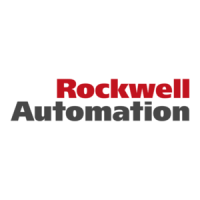
Do you have a question about the Rockwell Automation Allen-Bradley PowerFlex 755T Flux Vector Tuning and is the answer not in the manual?
| Model | PowerFlex 755T |
|---|---|
| Type | AC Drive |
| Input Frequency | 50/60 Hz |
| Control Method | Flux Vector Control |
| Communication Protocols | EtherNet/IP, ControlNet, DeviceNet |
| Cooling Method | Air-cooled |
| Safety | Safe Speed Monitor |
| Motor Control | Induction |
Explains mechanical properties influencing drive performance, including inertia, compliance, and backlash.
Describes system oscillations, their types (LF, MF, HF), and how they affect tuning.
Details key metrics for tuning: Bandwidth, Damping Factor, System Bandwidth, and System C/U Select.
Provides an overview of the drive's internal control structure and feature locations.
Accounts for load inertia and scales torque to match velocity loop bandwidth.
Estimates and compensates for mechanical load, improving tuning simplicity and performance.
Automatically monitors and adjusts filters and gains to compensate for changing load conditions.
Second-order filters used to suppress specific resonant frequencies in the torque loop.
Describes default control loop gain settings for satisfactory performance without tuning.
Provides steps to configure the drive for high performance out-of-the-box.
Uses one parameter to adjust system bandwidth and performance.
Measures motor characteristics, including electrical parameters and inertia.
Details static and dynamic tests for measuring motor electrical properties.
Tests to measure motor inertia and total inertia for accurate calculations.
Calculates control loop gains and dynamic limits based on measured parameters.
Step-by-step process for tuning current, velocity, and position loops incrementally.
Procedure for manually tuning the current control loop for optimal performance.
Steps for manually tuning the velocity control loop for stability and responsiveness.
Procedure for manually tuning the position control loop to achieve desired stability.
Describes the Active Front End topology, LCL filter, and control loops.
Parameters and calculations for tuning the DC bus voltage regulator.
Estimates and compensates for DC bus load disturbances for improved performance.
Algorithm for estimating grid angle and frequency, crucial for AFE operation.
Detects abnormal grid conditions like voltage sags and phase loss.
Manages reactive power flow to enhance power factor and system efficiency.
Overcomes static, sliding, and viscous friction effects in mechanical systems.
Considerations for tuning drives with vertical loads and electronic counter-balance methods.
Implements closed-loop process control for speed or torque regulation.
Explains PID preload, ramp reference, zero clamp, and other controller features.
Provides access to technical support, knowledgebase, and phone numbers.
Mechanism for providing suggestions to improve documentation content.